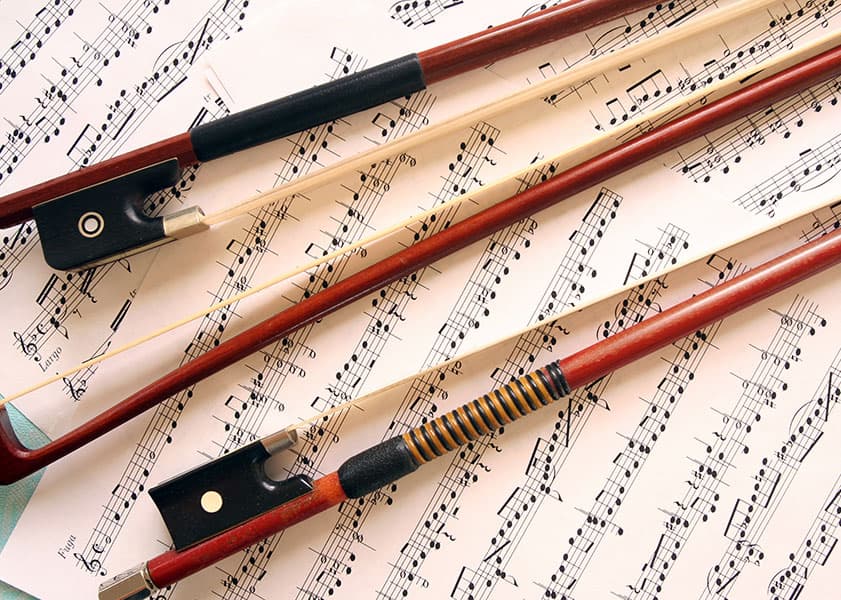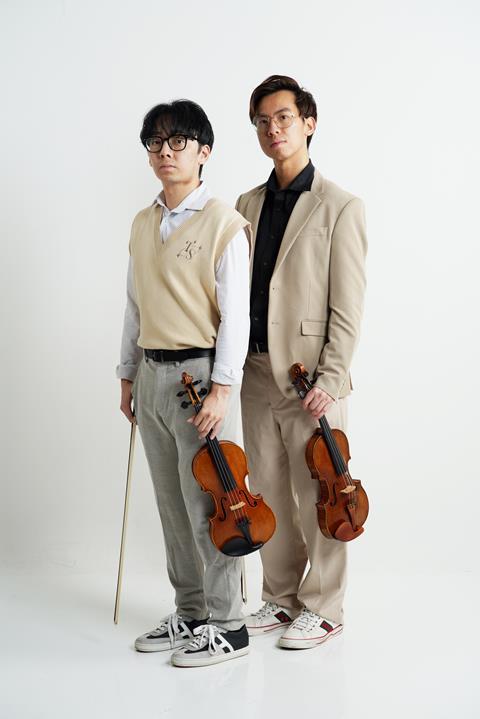Yes, many violinists own multiple violins. Each violin serves a different purpose.
In the meantime, don't forget to unlock a world of unlimited sound with Amazon Music Unlimited, where over 100 million songs wait at your fingertips. Whether you're working, relaxing, or fueling your creativity, the right track is always just one tap away. Elevate every moment with music that moves you.
Violins vary in sound, quality, and age. Some are better for practice, while others suit performances. A violinist might use one violin for concerts and another for travel. Different violins can also match different music styles. Owning multiple violins gives musicians flexibility.
It allows them to choose the best instrument for each situation. This ensures they always have the right tool for their needs. In this blog, we will explore why violinists need more than one violin. We will look at the benefits and reasons behind this practice. Stay tuned to learn more about the world of violinists and their instruments.
Introduction To Violinists’ Instruments
Violinists are known for their skill and dedication. They spend countless hours practicing and perfecting their craft. But do they use just one violin? Many people think so. Yet, the reality is different. Violinists often own more than one violin. Each instrument serves a unique purpose.
Common Misconceptions
Many believe that a violinist sticks to one violin. This idea is far from the truth. Owning multiple violins is common among professionals. The reason is not luxury but necessity. Different violins suit different needs.
For example, a violinist may have an old, valuable violin. This is often used for important concerts. Another violin might be newer and used for daily practice. Each violin has its own sound and feel. This variety helps violinists perform their best.
Importance Of Multiple Violins
Using more than one violin can greatly benefit a violinist. Here are some reasons why:
- Sound Quality: Different violins produce different tones. This allows violinists to choose the best sound for each piece of music.
- Practice: Daily practice can wear out a violin. Having a separate practice violin helps preserve the main instrument.
- Special Occasions: High-value violins are often reserved for special events. These instruments are usually very delicate.
- Backup: Instruments can break or need repairs. Having a backup ensures the violinist can always play.
Owning multiple violins is practical and essential for serious musicians. It allows them to adapt to various situations and maintain their instruments.

Credit: www.johnsonstring.com
Types Of Violins
Violinists often have multiple violins for different purposes. They choose violins based on their needs and the sound they want. There are different types of violins, each with unique features and uses.
Acoustic Violins
Acoustic violins are the traditional type. They produce sound through the vibration of strings, which resonate in the body of the violin. These violins are favored for classical music. They have a rich, warm tone. Acoustic violins come in various sizes, making them suitable for players of all ages.
Electric Violins
Electric violins are modern instruments. They use electronic pickups to amplify sound. These violins are popular in genres like rock, jazz, and pop. They can produce many effects with the help of amplifiers and pedals. Electric violins are often solid-bodied. This design reduces feedback when amplified. They are ideal for performances requiring high volume or special sound effects.
Reasons For Owning Multiple Violins
Many violinists own multiple violins. This choice comes from various reasons. Each violin can serve a specific purpose. Owning more than one violin can enhance a musician’s performance.
Different Sounds
Each violin has a unique sound. Some violins produce brighter tones. Others have a deeper, richer sound. Musicians may choose a violin based on the music style. Different genres require different tones. Classical music may need a warm tone. Contemporary pieces might need a sharper sound. Having multiple violins allows for versatility.
Backup Instruments
Violins are delicate instruments. They can break or need repairs. Having a backup violin ensures the show goes on. A second violin can be a lifesaver during performances. It also helps during long practice sessions. Switching violins can reduce wear and tear. This keeps each instrument in better condition. Having backups also means less stress for the musician. They know they are prepared for any situation.

Credit: www.thestrad.com
Performance Vs. Practice Violins
Violinists often have more than one violin to suit different needs. The primary distinction lies between performance violins and practice violins. Each type serves a unique purpose, offering specific benefits for the musician.
Concert Violins
Concert violins are the finest instruments a violinist owns. These violins produce superior sound quality. They are crafted from high-quality wood and materials. Concert violins are used during live performances and recordings. Their rich, resonant tone captivates audiences. These violins require delicate handling and regular maintenance.
Everyday Practice Violins
Everyday practice violins are for regular use. They are durable and more affordable. Violinists use them during lessons and daily practice. These violins may not produce the same sound quality. Yet, they are excellent for building skills and technique. Practice violins can endure more wear and tear. They are the workhorses of a violinist’s collection.
Historical And Modern Violins
The world of violins is rich in history and craftsmanship. Violinists often have multiple violins to suit different musical needs. Historical and modern violins each offer unique qualities that musicians cherish.
Antique Violins
Antique violins are prized for their rich, warm tones. Many of these instruments were crafted by renowned luthiers like Stradivari and Guarneri. Violinists value these instruments for their unique sound and historical significance.
Owning an antique violin is also a matter of prestige. These violins are often several hundred years old and have survived through generations of musicians. The intricate craftsmanship of these instruments is unmatched. The wood used in their construction has aged beautifully, contributing to their distinct sound.
Contemporary Designs
Contemporary violins are designed with modern playing techniques in mind. These instruments are often more affordable than antique violins. They are crafted using advanced technologies and materials. This allows for greater consistency in sound and playability.
Many modern violins are made with carbon fiber. This material is durable and less affected by changes in temperature and humidity. Some contemporary violins also feature innovative designs that improve sound projection and ease of play.
Both antique and modern violins have their place in a violinist’s collection. Musicians choose their instruments based on their specific needs and preferences.
Travel And Portability
Travel and portability are important aspects for violinists. They often need to travel for performances, lessons, or practice sessions. Choosing the right violin for travel can make these journeys smoother and more enjoyable.
Travel-friendly Violins
Some violins are designed specifically for travel. These violins are lightweight and easy to carry. They fit into smaller cases, making them convenient for traveling. Electric violins are also a good option. They are often more compact and durable.
Challenges Of Traveling With Violins
Traveling with violins can pose several challenges. Violins are delicate instruments. They need proper care and handling to avoid damage. Temperature changes during travel can affect the wood and strings. This can impact the sound quality of the violin.
Air travel can be particularly tricky. Violins must often be carried on board to ensure their safety. This might require special arrangements with airlines. Another challenge is the risk of theft or loss. Violinists need to take extra precautions to keep their instruments safe.
Financial Considerations
For violinists, owning multiple violins isn’t just a matter of preference. It often involves significant financial considerations. From the cost of high-quality violins to their potential investment value, understanding these factors is crucial.
Cost Of High-quality Violins
High-quality violins can be quite expensive. Professional violins can range from a few thousand dollars to several hundred thousand dollars. The price depends on factors such as the maker, age, and condition of the violin.
Here is a table that shows the price range for different levels of violins:
| Violin Type | Price Range |
|---|---|
| Student Violin | $300 – $1,000 |
| Intermediate Violin | $1,000 – $5,000 |
| Professional Violin | $5,000 – $100,000+ |
Investing in a high-quality violin is essential for a violinist’s performance. The sound quality and playability of the instrument can greatly impact their music.
Investment Value
Some violins can appreciate in value over time. This makes them not only musical instruments but also financial investments. Violins made by renowned makers or those with historical significance can increase in value.
Here are some factors that can affect the investment value of a violin:
- Maker: Violins made by famous luthiers, like Stradivari or Guarneri, are highly valuable.
- Age: Older violins, especially those well-maintained, can be more valuable.
- Condition: The better the condition, the higher the potential value.
- Provenance: A documented history of ownership can add to the violin’s value.
Owning multiple violins can be seen as diversifying one’s investment in their musical career. Each violin can serve a different purpose, from practice to performance, and contribute to the violinist’s overall success.

Credit: www.violinist.com
Care And Maintenance
For violinists, care and maintenance of their instruments are crucial. A well-maintained violin sounds better and lasts longer. This is even more important for those who own multiple violins. Each violin requires individual attention to keep them in top condition.
Regular Maintenance
Regular maintenance involves several routine tasks. These tasks ensure the violin remains in good shape.
- Clean the violin with a soft cloth after each use.
- Check and tighten the pegs and strings.
- Inspect the bridge and soundpost for alignment.
- Apply rosin to the bow hair regularly.
These steps prevent dust and grime buildup. They also keep the instrument ready for performance.
Special Care For Multiple Violins
When owning multiple violins, special care is necessary. Each violin may have different needs.
| Task | Frequency | Reason |
|---|---|---|
| Humidity Control | Weekly | Prevents wood from cracking. |
| String Replacement | Every 3-6 months | Maintains sound quality. |
| Professional Check-up | Annually | Ensures overall condition. |
Each violin should be stored in a proper case. This protects them from damage. Consistent care keeps all violins in optimal playing condition. It also extends their lifespan.
Frequently Asked Questions
Do Violinists Own More Than One Violin?
Yes, many violinists own multiple violins. They may use different violins for various music styles, performances, and practice.
Why Do Violinists Need Multiple Violins?
Violinists need multiple violins for different sound qualities, backup instruments, and specific performance requirements or preferences.
How Do Violinists Choose Their Violins?
Violinists choose their violins based on sound quality, playability, and the instrument’s suitability for their music style.
Do Professional Violinists Use More Than One Violin?
Yes, professional violinists often use multiple violins. They select instruments based on performance needs and personal preference.
Conclusion
Violinists often own multiple violins for different needs. Each violin offers unique sounds. Some are for practice, others for performance. Different violins suit various music styles. Having several violins allows versatility. It enhances a violinist’s musical expression. So, owning multiple violins is quite common.
It helps them adapt and excel. This diversity enriches their artistry. Thus, many violinists find it essential.
{ “@context”: “https://schema.org”, “@type”: “FAQPage”, “mainEntity”: [ { “@type”: “Question”, “name”: “Do violinists own more than one violin?”, “acceptedAnswer”: { “@type”: “Answer”, “text”: “Yes, many violinists own multiple violins. They may use different violins for various music styles, performances, and practice.” } } , { “@type”: “Question”, “name”: “Why do violinists need multiple violins?”, “acceptedAnswer”: { “@type”: “Answer”, “text”: “Violinists need multiple violins for different sound qualities, backup instruments, and specific performance requirements or preferences.” } } , { “@type”: “Question”, “name”: “How do violinists choose their violins?”, “acceptedAnswer”: { “@type”: “Answer”, “text”: “Violinists choose their violins based on sound quality, playability, and the instrument’s suitability for their music style.” } } , { “@type”: “Question”, “name”: “Do professional violinists use more than one violin?”, “acceptedAnswer”: { “@type”: “Answer”, “text”: “Yes, professional violinists often use multiple violins. They select instruments based on performance needs and personal preference.” } } ] }As an Amazon Associate, Cleanestor earns from qualifying purchases at no additional cost to you.

